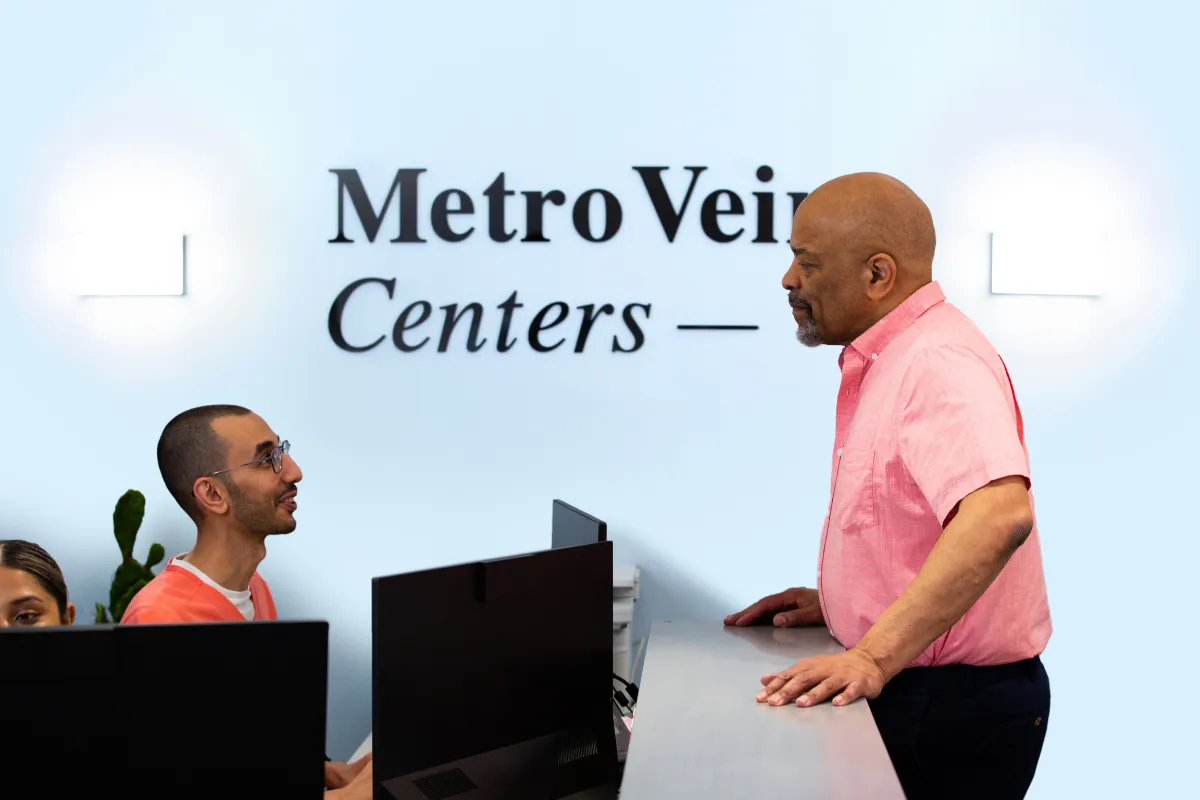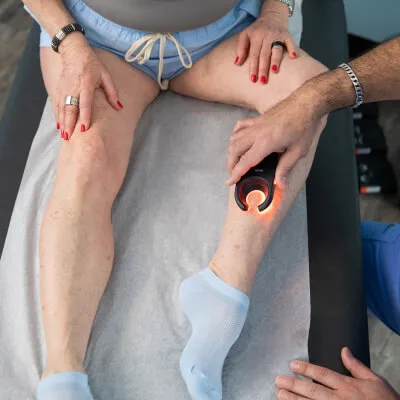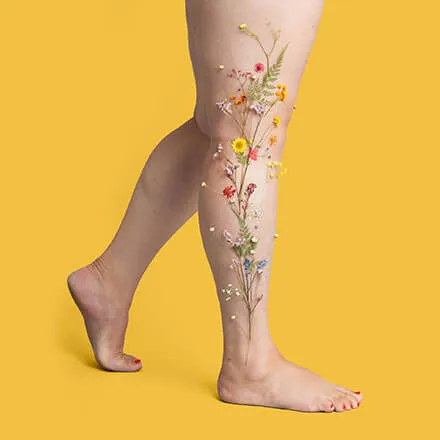Key Takeaways
- The top three minimally invasive treatments for chronic venous insufficiency (CVI) and persistent leg swelling are Radiofrequency Ablation (RFA), Varithena® (Polidocanol Microfoam), and the VenaSeal(TM) Closure System.
- These modern procedures effectively target the underlying cause in deeper veins.
- These modern, medically-approved treatments offer long-lasting relief with minimal downtime.
What's Behind Persistent Leg Swelling and Vein Discomfort?
If you've been living with the discomfort of persistent leg swelling, aching, or a heavy feeling in your legs, you might be experiencing chronic venous insufficiency (CVI). CVI is a common condition, affecting a significant portion of the adult population. It is estimated that as many as 1 in 20 adults have CVI.
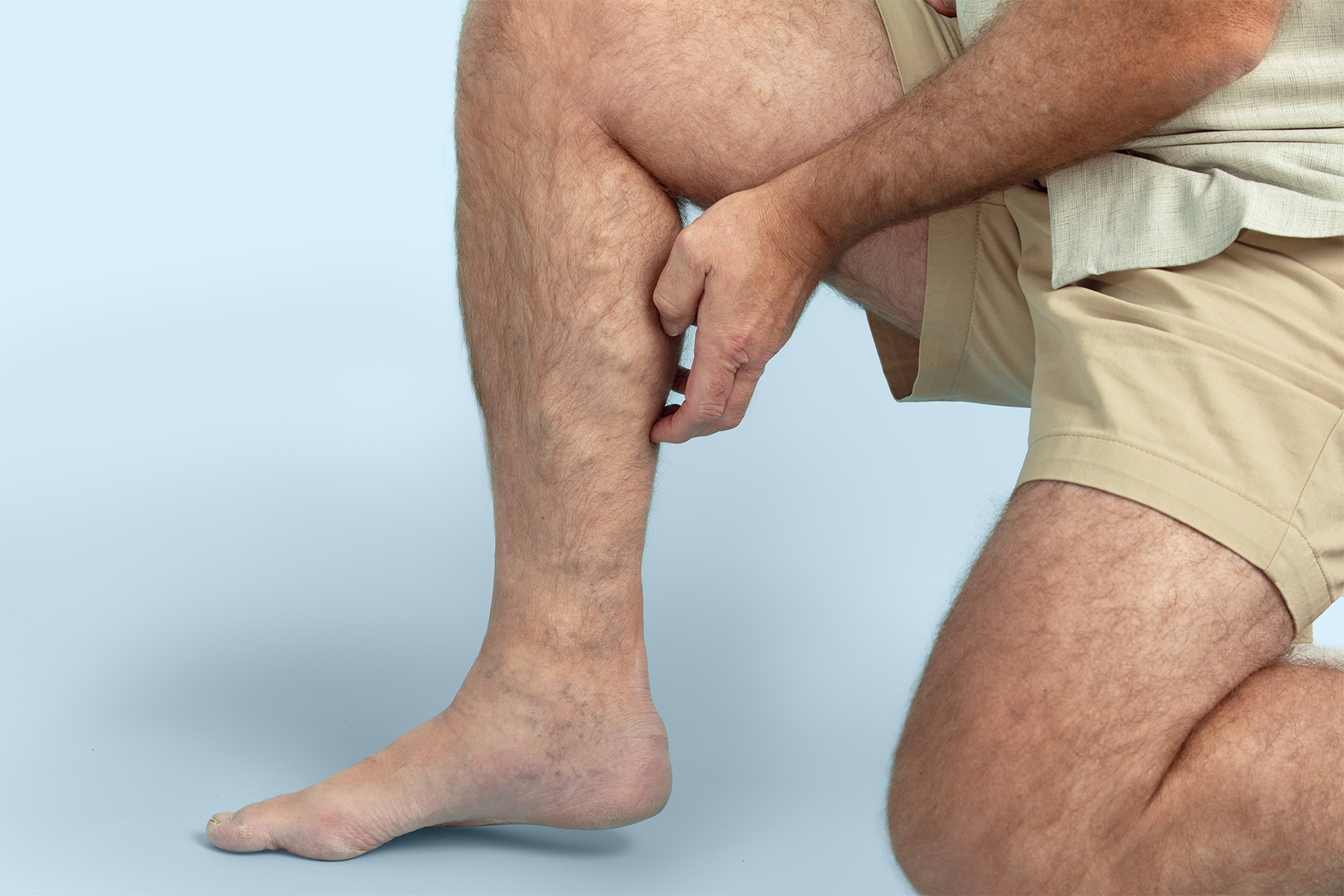
Understanding Chronic Venous Insufficiency (CVI)
Chronic venous insufficiency (CVI) is the underlying cause of many uncomfortable leg symptoms, including persistent leg swelling. This condition occurs when the one-way valves inside your leg veins become damaged or weakened, causing them to fail to close correctly. When these valves fail to close, blood can flow backward and pool in the veins, a condition known as venous reflux.
This pooling leads to a range of symptoms, including leg swelling (medically known as edema), pain, an aching sensation, a feeling of heaviness, and fatigue in the legs. In some advanced cases, it can also lead to noticeable skin changes or the development of visible varicose veins. The direct link between CVI and leg swelling is that this pooled blood increases the pressure within the veins, which then forces fluid out of the vessels and into the surrounding tissues, causing the visible and uncomfortable swelling.
Why Targeting the Deeper Truncal Veins Matters
For lasting relief from CVI and leg swelling, it's often necessary to address the larger, deeper veins in your legs, known as the truncal or saphenous veins. These veins serve as major highways for blood returning from your legs to your heart.
When the valves within these saphenous veins malfunction, they become the primary source of venous reflux. This means that a significant volume of blood isn't being pumped efficiently out of the legs. Therefore, treating these source veins is central to permanently resolving the symptoms of CVI. By closing off these problematic pathways, blood is rerouted to healthier veins, which can significantly reduce pressure and improve circulation in the affected leg.
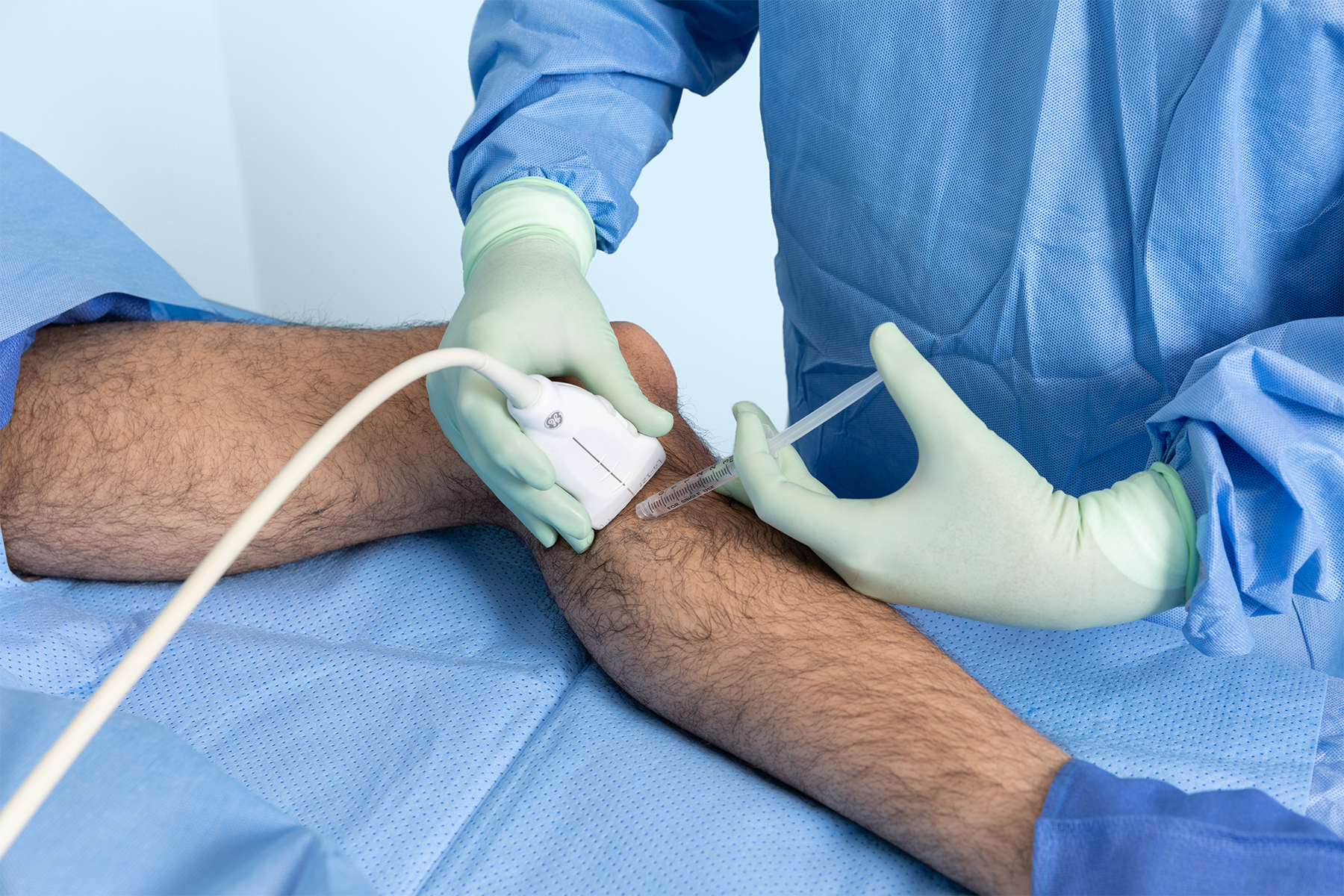
Top Vein Treatments for CVI and Leg Swelling
Thanks to advancements in vein treatments, we can address CVI and its associated symptoms with minimal discomfort and downtime. These minimally invasive procedures primarily target the deeper truncal veins in your legs, which are often the cause of insufficient blood flow. Let's explore the some of the most effective, approved treatment options for CVI:
Radiofrequency Ablation (RFA): How it Works
Radiofrequency Ablation, or RFA, uses gentle heat energy to seal off the diseased vein. A thin catheter is guided into the affected vein, the heat causing the vein to collapse and close, redirecting blood flow to healthier veins nearby.
Reasons to Choose RFA
RFA is highly effective for treating larger, straighter veins that are often responsible for significant reflux and symptoms like aching or heavy legs, leg swelling, and poor circulation. It's a highly precise method that offers excellent long-term results in treating the underlying cause of CVI.
RFA Treatment Recovery: What to Expect
Many patients treated with RFA experience minimal discomfort and can resume light activities right away. You'll typically wear compression stockings for a period after the procedure, but downtime is generally short, allowing you to get back to your daily routine quickly. Most of our patients return to normal activity within 24 hours.
Varithena® (Polidocanol Microfoam): How it Works
Varithena is a unique, foam-based medication that is injected into a vein using ultrasound guidance to ensure accurate placement. This foam fills the vein section, causing it to close safely and gently. Your blood then simply redirects through your surrounding healthy veins, allowing for increased circulation and improved symptoms.
Reasons to Choose Varithena
Varithena is a versatile treatment option, making it ideal for treating veins that are more twisted, winding, or located closer to the skin's surface, where heat treatments might not be suitable. It's also highly effective for treating multiple segments of a vein and multiple veins in one session.
Recovering From Varithena Treatment: What to Expect
Varithena is a minimally invasive treatment that typically involves very little discomfort. The procedure usually takes less than 15 minutes, and patients can typically walk immediately after the treatment and resume their normal activities. Compression stocking wear is generally recommended after treatment for a specified period.
VenaSeal(TM) (Medical Adhesive): How it Works
VenaSeal(TM) is another innovative, non-thermal option that uses a safe, medical-grade adhesive (think medical super glue) to close the diseased vein. A small amount of adhesive is delivered into the vein, sealing it shut instantly.
Reasons to Choose VenaSeal
VenaSeal has been proven in clinical studies to have a 99% success rate after six months and typically requires only one injection. Treatment doesn't require heat or extensive local anesthesia injections. This often means less discomfort during the procedure and often eliminates the need for post-treatment compression stockings in many cases, resulting in an easier recovery.
VenaSeal Treatment Recovery: What to Expect
VenaSeal treatment typically takes less than 30 minutes, with no downtime required. Patients can usually return to their normal activities immediately, and many don't even require post-procedure compression therapy.

Choosing the Right Treatment for You
Choosing the right treatment often depends on your specific vein condition and lifestyle. Your vein doctor can provide recommendations tailored to your specific symptoms and condition. Refer to the Treatment Comparison Chart below to help guide your treatment decisions.
Treatment Comparison Chart
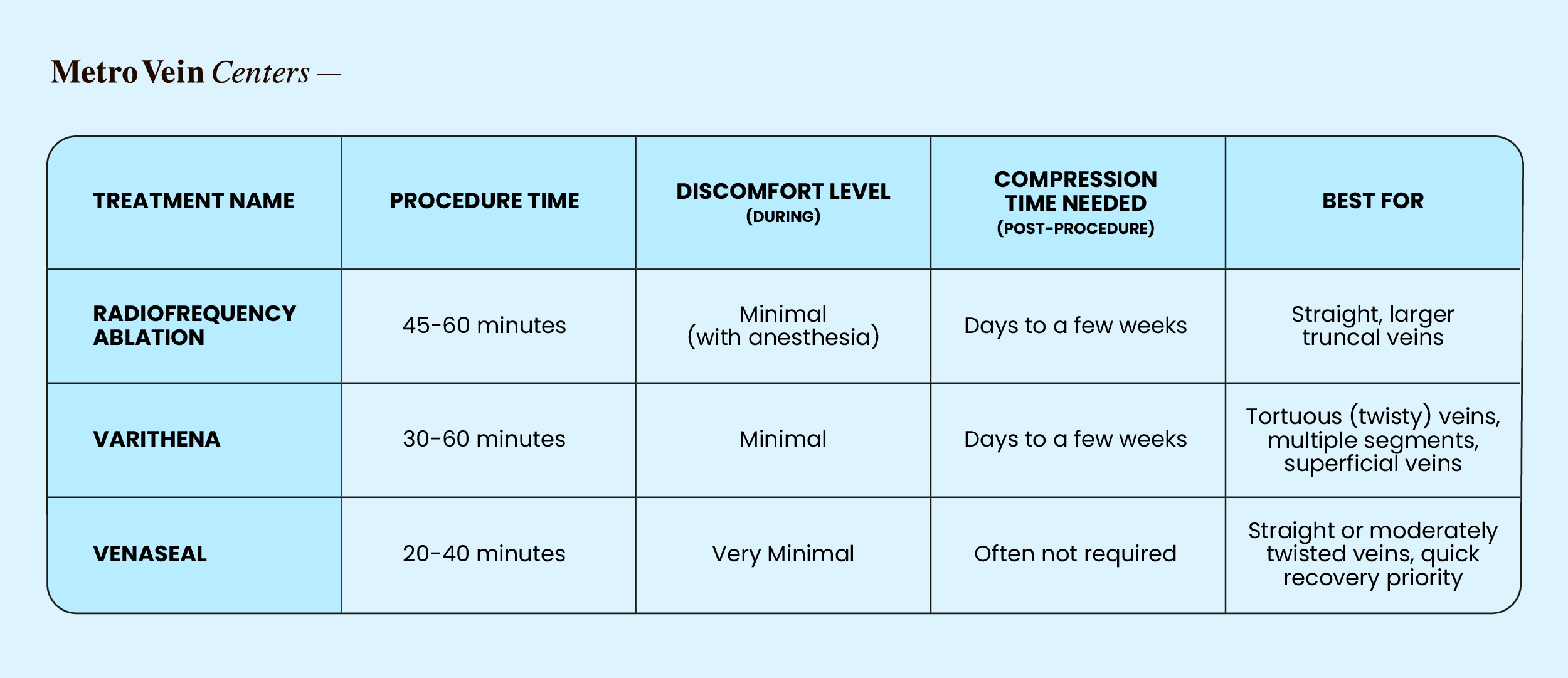
Common CVI Treatment Considerations
Choosing the best treatment for your CVI and leg swelling is a personalized process. Your vein specialist will thoroughly evaluate your condition, but here are some additional considerations that may impact your decision:
Vein Shape
If your problematic vein is relatively straight, Radiofrequency Ablation can be an excellent choice. For those twisty or winding veins, Varithena can be a highly effective solution.
Concerns About Needles or Anesthesia
If you prefer to minimize injections or avoid extensive local anesthesia, VenaSeal (which often requires only one small numbing injection) or Varithena (which typically uses fewer numbing injections) might be a better fit.
Recovery Timeline
Do you need to bounce back quickly? While all these treatments offer quick recovery times, VenaSeal often boasts the fastest return to full activity and frequently eliminates the need for post-procedure compression stockings. This is why VenaSeal is a top choice for those prioritizing a quick return to their regular activities and routine.
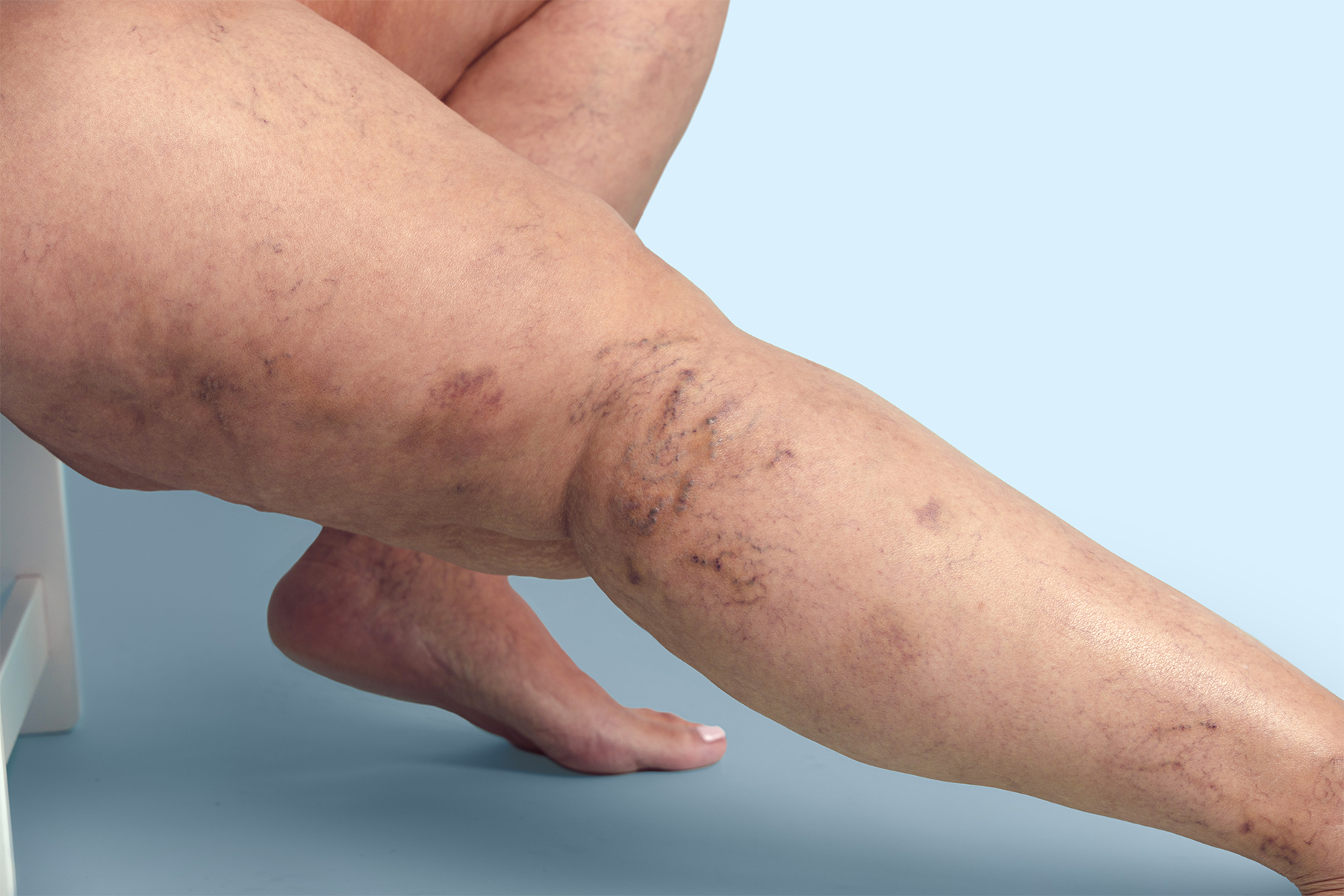
The Path to Healthier, Happier Legs
Living with chronic venous insufficiency and its uncomfortable symptoms, such as leg swelling, doesn't have to be the norm. With modern, minimally invasive treatments like Radiofrequency Ablation, Varithena, and VenaSeal, you have several highly effective options available that address the root cause of CVI symptoms. These procedures target the deeper veins responsible for CVI, offering lasting relief and significantly improving your quality of life with minimal downtime.
Ready to find lasting relief from leg swelling and CVI? Schedule a free vein health evaluation at Metro Vein Centers today to discuss your personalized treatment options.
Frequently Asked Questions
What's the difference between RFA, Varithena, and VenaSeal - and how do I know which one is right for me?
RFA uses heat to close veins, while Varithena uses a special foam, and VenaSeal uses a medical adhesive. The best option for you depends on factors such as your specific vein anatomy (straight vs. twisted), your preference for heat versus non-heat, and your desired recovery time. A consultation with a vein specialist will help you determine the best treatment option for you.
Will insurance cover my treatment at Metro Vein Centers?
Yes, there is a good chance that your treatment at Metro Vein Centers will be covered by insurance. Most advanced treatments for chronic venous insufficiency are covered by insurance if deemed medically necessary to alleviate symptoms, such as pain, swelling, or skin changes. Our team at Metro Vein Centers will work closely with you to verify your benefits and help you navigate the insurance process.
Is the procedure painful, and what can I expect during recovery?
No, these minimally invasive procedures typically cause little discomfort. Recovery is generally quick, with most individuals walking immediately and returning to normal activities within a day or two, often wearing temporary compression stockings.
How soon will I feel relief from leg swelling and heaviness after treatment?
Many patients begin to feel relief from leg swelling, heaviness, and aching within days to a couple of weeks following treatment, as healthy blood flow is re-established and the body starts to reabsorb pooled fluid. Full improvement can continue over several weeks after treatment.
Are these treatments permanent, or is there a chance of the veins coming back?
These treatments are highly effective at permanently closing the treated vein, with excellent success rates. Although the treated vein itself is closed, new varicose veins may develop over time in other areas due to genetic predisposition or other risk factors. Regular follow-ups and maintaining a healthy lifestyle are recommended.

Dr. Philip LoPresti
Meet Dr. Philip LoPresti DO, DABVLM, FACS, a board-certified vein specialist and surgeon with over 20 years of experience. Schedule an appointment with him in Queens, NY today.
Meet Dr. Philip LoPresti
Trusted insight from the nationally accredited, board-certified vein doctors at Metro Vein Centers.




